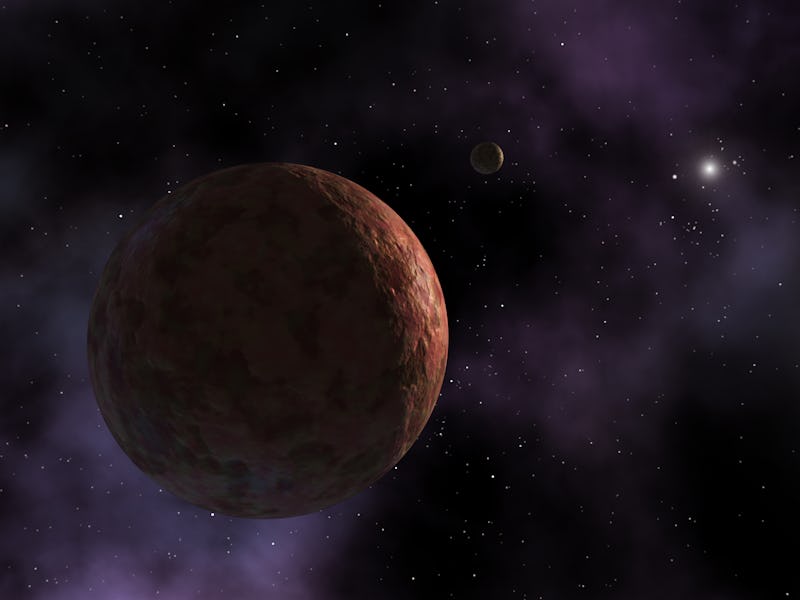Life After Mars: 5 Solar System Locations Humankind Should Colonize Next
Looking ahead from the near future to the somewhat-more-distant future.

The futuristic bowels of the internet quaked today at the news that NASA will make some kind of holy-shit announcement next Monday. Already, some are speculating that it will concern whether Mars has flowing water, or other preconditions, for growing life.
Couple that with the impending launch of the Mars Insight Rover, set to launch next March and scheduled to perform experiments to determine Mars’ geophysical capabilities, and there’s a good possibility that Mars’ colonizability will take several giant leaps forward in this lifetime.
But what about after Mars? It’s hard to believe the colonization effort will stop, after all, at one destination. There isn’t enough room, or enough gravity, on Mars, to consider it for a long-term stay. Furthermore, the explorers of the past didn’t reach America, or Florida, or Missouri, and say, “Enough’s enough.”
No, the effort to establish other bases for human life should be expected to be ongoing. What are some of the most viable spots for a colony after Mars? Check out what they are and what to expect below.
The Moon
The moon is still the likeliest place humankind will look to for establishing life after, or during, a Mars colonization. Of course, the same constraints still apply: almost non-existent gravity, non-existent atmosphere, no life and little chance for growing any.
Contrasted with Mars, the Moon is barren, which will mean a colonization effort will have to be, as many have imagined, a closed-bubble affair. That will be expensive, but pursuit of the matter is ongoing. Last year, Russia announced that it is aiming to colonize the moon by 2030.
Nevertheless, it will take a lot of money — more than Russia can afford alone — before the project is realized. But one should remain hopeful that if the effort to colonize Mars is a success, an international Moon colony becomes a slightly smaller leap for humankind to make.
Venus
With its comparable surface gravity to Earth (0.904 g-forces, versus Mars’ 0.38, the latter which could lead to complications like muscle loss and bone decalcification) and a relatively short commute (580 days to Mars 760), Venus makes a superficially welcoming sister planet for visits. Too bad its atmosphere is dense, poisonous, and tempestuous.
Then came the NASA scientist who postulated that a balloon of human-breathable air could float at cloud-top level, shielded from the sun by Venus’ outer atmosphere.
Though far-fetched, time and large expense could see experiments like a floating city attempted even in this lifetime. If they succeed, they could propel Venus from fantastic colonial what-if to Earth’s friendly, though slightly air-headed, next-door neighbor.
Ceres
The dwarf planet Ceres is a part of the asteroid belt between Mars and Jupiter. The NASA satellite Dawn entered Ceres’ orbit earlier this year and has been tweeting images of its crater-covered surface.
Given Ceres’ location, its lack of atmosphere, etc., it is unlikely it would be viable as a full-on liveable colony until some major advances in deep space science.
That said, Ceres’ attractiveness could be as a work colony and base of location for asteroid mining. The reflections in the craters are believed to be ice, and Ceres also may contain an internal ocean of liquid water. Thus, if water becomes a scarce resource (as it most likely will, and arguably is already), Ceres could provide one way to plumb it en masse.
Mercury
Mercury’s proximity to the sun and, consequently, its profound volatility in temperature, push it down the list of colonizable destinations. Seven-hundred-degree surface temps and no atmosphere make for a brutal place to establish shop.
As for Mercury’s appeal as a colony: the north and south poles of Mercury contain ice, which means water, or something close to it.
Furthermore, Mercury’s surface gravity is twice that of the moon’s, and close to that of Mars, meaning if we can solve the physical challenges that low-gravity poses on our bodies on Mars first, we can implement that science on Mercury.
Like with Venus and its plant-growing capabilities, consider Mercury’s proximity for generating energy. That close to the sun, it could make for one hell of a charging station.
Or we could blow the planet to smithereens, Death Star-style, and harvest the energy of the Sun using Dyson spheres …
Titan
Oil, my boy! Sweet, glorious oil! Saturn’s orange moon (and Kurt Vonnegut’s favorite planet?) is awash in it. There’s a veritable cornucopia of hydrocarbons, which rain from the sky like, well, rain.
Ever since the Cassini spacecraft flyover in 2004 discovered Titan’s incredible atmosphere of hydrocarbons, imaginative thinkers like Julian Nott have speculated on Titan as a distant but enticing destination for human life.
Of course, temperature (70 Kelvin, positively cryogenic) and travel distance are an issue, but if future colonies need to keep the engine of exploration running, remember that Titan.